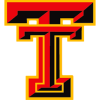By Mike
McGraw
Executive Director
Now that
the 1st annual Hoosier Authority All-Sports Trophy competition is in the books,
it is time to step back and see what we learned about the landscape of Indiana high school
sports. The lessons are plentiful, but we want to take a moment to discuss just
a few of them.
Not
surprisingly, large urban school districts did not fare well in the
competition. What is surprising,
though, is the fact that the poor performance was by no means universal. While
districts in Indianapolis, South
Bend, Gary, and Hammond
fared poorly, the Fort Wayne and Evansville districts
actually scored reasonably well.
Now, we
are sure people will point to all sorts of socio-economic reasons for that, but
we will leave that debate to those who are qualified. We would suggest to reasons
of practicality, one of which the IHSAA might want to investigate.
Points
were awarded in the competition beginning with sectional performance. In Fort Wayne and Evansville,
the sectionals in many sports are, in essence, a city championship. In the
districts that didn���?�t fare well, the urban schools are split into sectionals
with many of the large surrounding suburban schools. It might be reasonable to
look at restructuring some of these sectionals.
Secondly,
while it might not be politically correct to say, the simple fact is that many
urban districts take an overall fatalistic view toward athletics. Fort Wayne and Evansville,
on the other hand, do not.
People
will surely point to the fact that private schools did well ���?? after all,
Indianapolis Cathedral finished 13th and Evansville Memorial wound
up 24th. In addition, Heritage Christian was the highest-scoring Class
2A school, while Lafayette Central Catholic led the Class A contingent.
However, a deeper look indicates why the IHSAA did the right thing in rejecting
the multiplier earlier this year.
Many
private schools fared very poorly, including nearly all of the ���?Christian��
schools except Heritage Christian. Unless a policy unfairly singled out
individual schools, any system would have to deal with all private institutions
and, in most cases, there is simply no justification.
There were
other interesting findings. Among the state���?�s larger schools, there appears to
be a pretty good balance of power geographically. Out of the top 30 finishers,
nine surround Indianapolis,
11 are northern schools, and 10 come from the south. The Metropolitan
Interscholastic Conference firmly staked its claim to being the top conference
in the state, placing six teams in the Top 20; no other league had more than
two.
In many
instances, the MIC schools got their edge because of superior girls���?� athletic
programs
Finally,
there is no ignoring that the big winners were the state���?�s large suburban
schools. It would seem that is because they did so well in the so-called ���?Olympic��
sports. The truth, however, is that in many of those sports, independent or
club competition is as important ���?? or more important ���?? than school
competition. And so is independent instruction.
The following
observation is not meant to slight in any way, but the fact that these schools
did so well may say more about the quality of outside instruction available
than it does about the school athletic departments. It is also clear that, in
many cases, they take these sports more seriously.

















































 Processing your request, Please wait....
Processing your request, Please wait....
